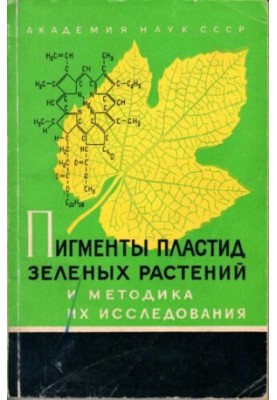Pigments of leaf plastids of green plants and the method of their study.
 Instant download
Instant download
after payment (24/7)
 Wide range of formats
Wide range of formats
(for all gadgets)
 Full book
Full book
(including for Apple and Android)
The book “Pygments of leaf plastids of green plants and the methodology for their study”, created by the team of authors, is a unique and comprehensive study of one of the key topics in the field of botany and plant physiology. This scientific work is intended for specialists, students and anyone interested in the inner world of green organisms, their biochemical processes and methods of study. It reveals the intricacies of the composition and role of pigments such as chlorophyll, carotenoids and other important components responsible for photosynthesis and leaf coloration. What makes this book especially attractive and valuable is a thorough analysis of modern methods of analyzing the pigments of plastids, as well as practical recommendations for their study. The authors describe laboratory techniques in detail, ranging from classical extraction and spectrophotometry techniques to modern instrumental approaches such as chromatography and spectroscopy. Thanks to this publication, the reader will be able not only to understand the theoretical foundations, but also to master the practical skills necessary for conducting their own research. The book pays special attention to the preparation of samples, the interpretation of the results and the features of working with various types of green plants. This book is a godsend for botanical students, biologists, agronomists, and researchers who seek to deepen their knowledge of photosynthetic pigments and their role in plant life. It will be of interest to those who study plant cells, the physiology of the leaf, as well as those who are looking for reliable methods for conducting laboratory experiments. In addition, the publication is suitable for teachers who want to supplement their lectures with practical materials, and graduate students working on scientific projects in the field of plant biochemistry. The topics raised in the book go beyond a simple description of the chemical composition - here we consider the evolution of photosynthesis, the adaptation of plants to different environmental conditions, as well as the influence of external factors on the content and activity of pigments. The authors show how changes in the pigment composition can signal the condition of the plant, its health and environmental situation. This approach makes the book not only a scientific tool, but also a valuable source of information for environmentalists and environmental monitoring specialists. The style of presentation in the "Pygments of leaf plastids of green plants and the method of studying them" is distinguished by clarity and logical structure, which facilitates the perception of even complex topics. The team of authors, with extensive experience in the field of botany and biochemistry, successfully combines theoretical explanations with practical recommendations, making the book both informative and convenient for use. This publication is a continuation of the traditions of scientific research, in which accuracy, accuracy and a systematic approach are important. If you are looking for a book that will help you understand how the pigments in green leaves are arranged and function, and will teach you how to study them correctly using modern methods - "Plastic pigments of green plant leaf and the method of studying them" will become an indispensable assistant for you. This publication is an excellent choice for those who appreciate scientific accuracy, practical orientation and want to expand their knowledge in the field of plant physiology and biochemistry. Inspiring and rich in information, it will open up new horizons in the study of nature and help to understand how green plants use pigments to support life and development.
LF/784568231/R
Data sheet
- Name of the Author
- Collective of authors
- Language
- Russian
- Release date
- 1964















